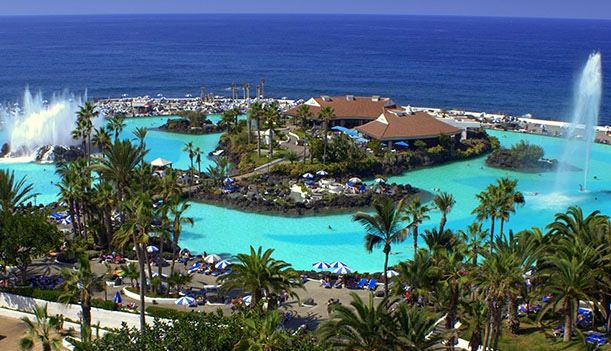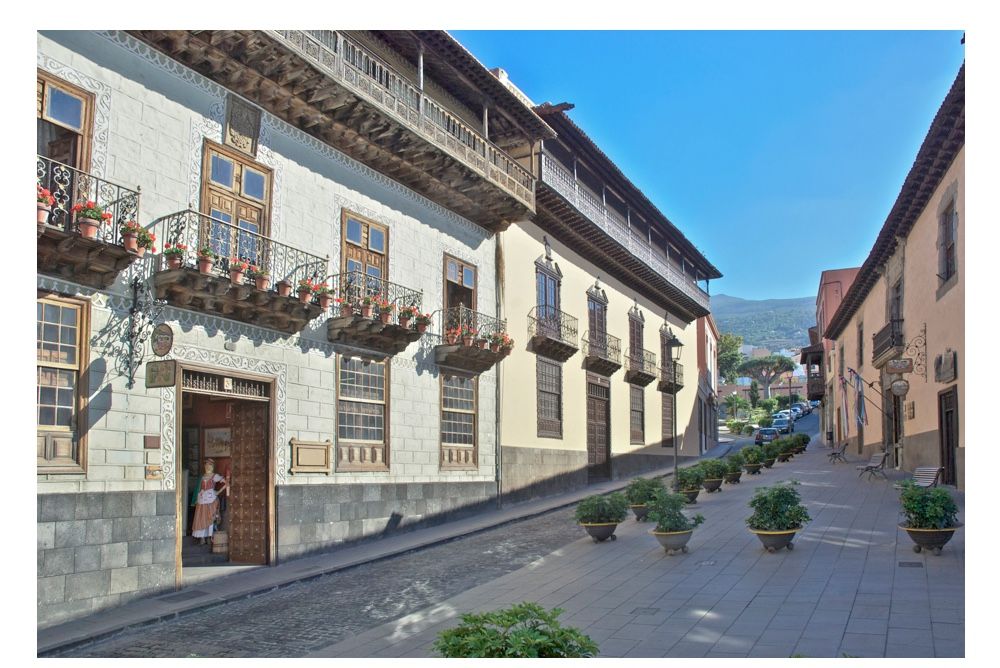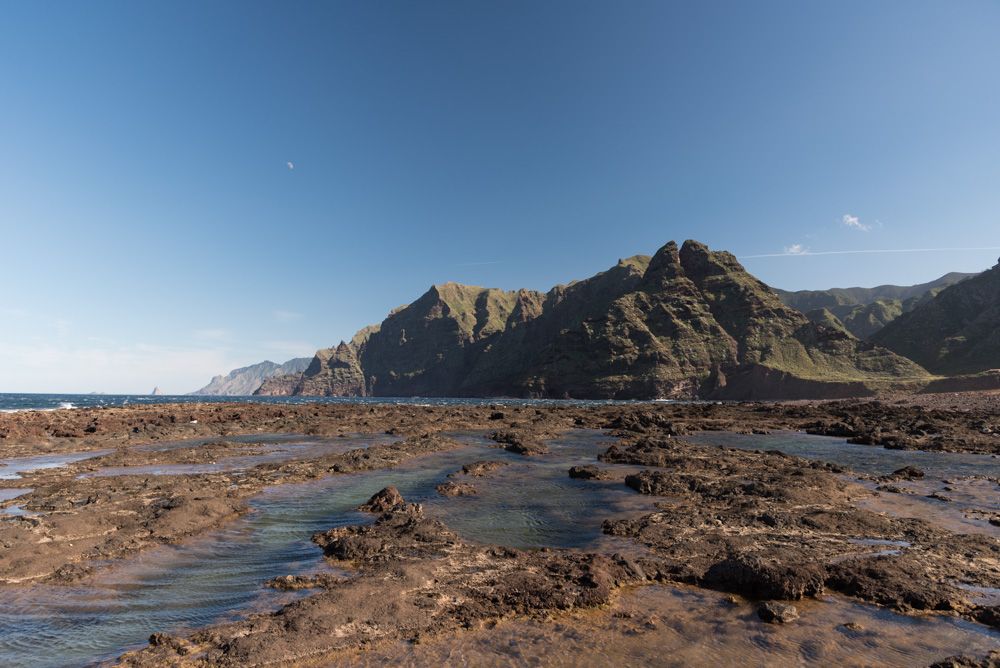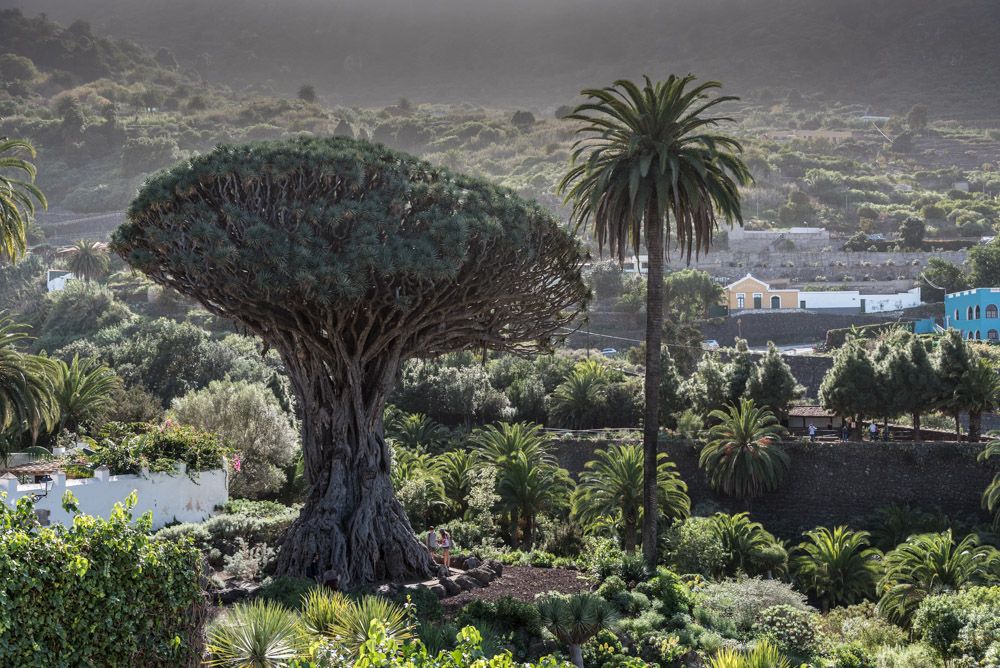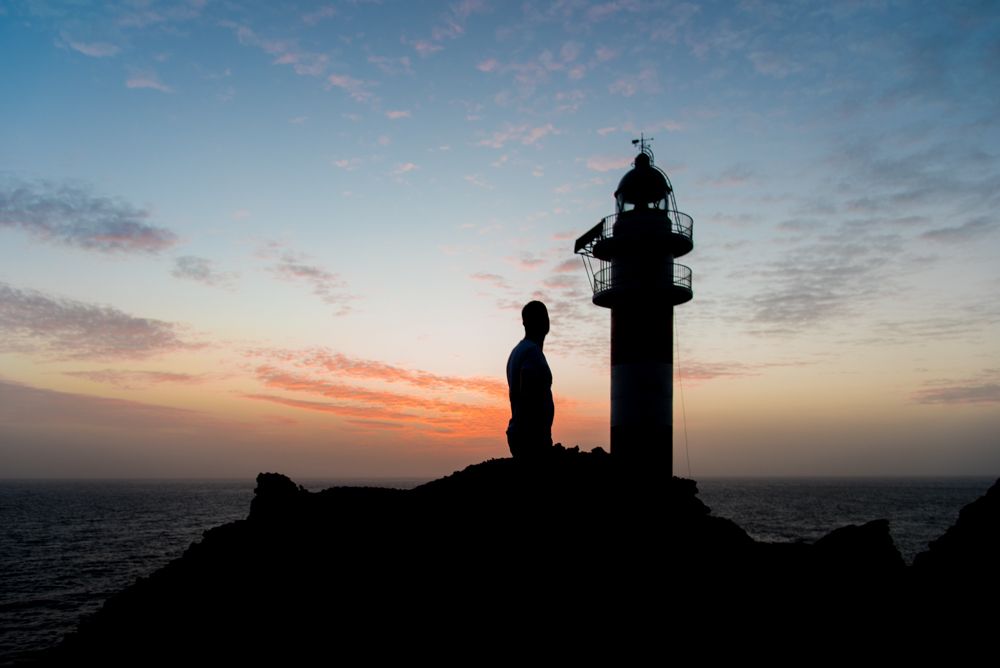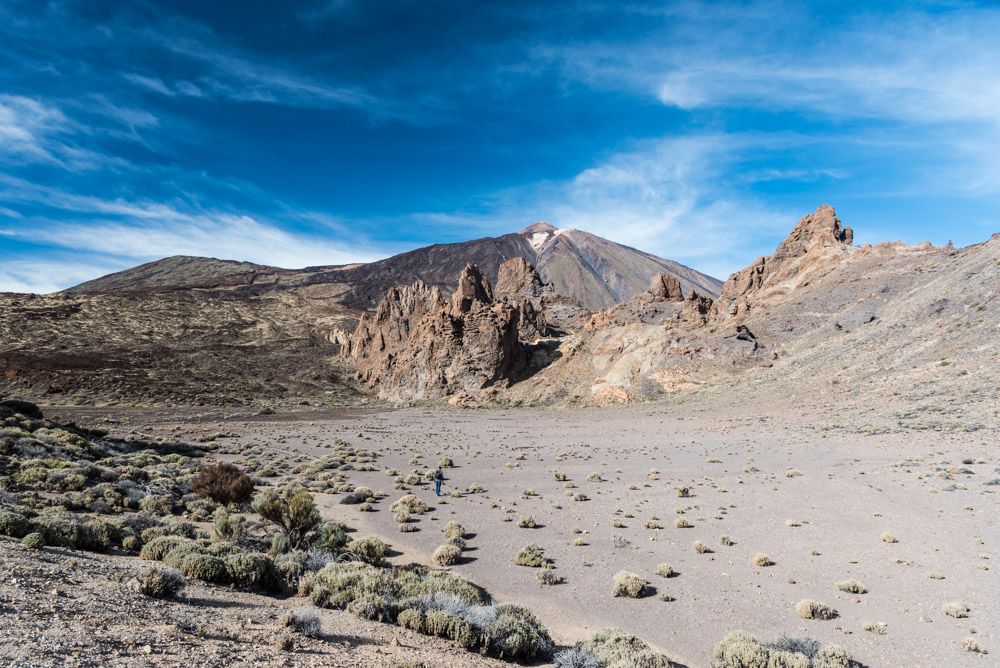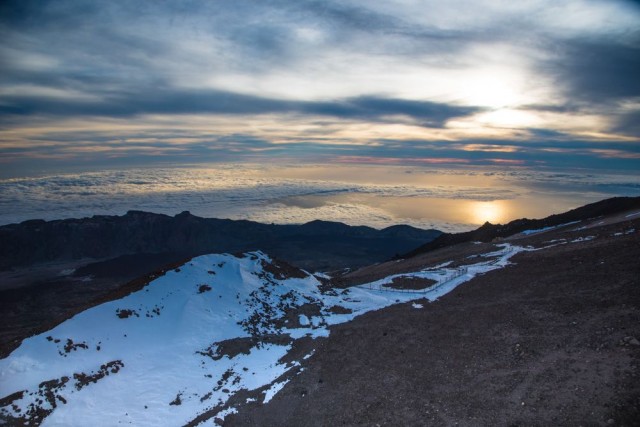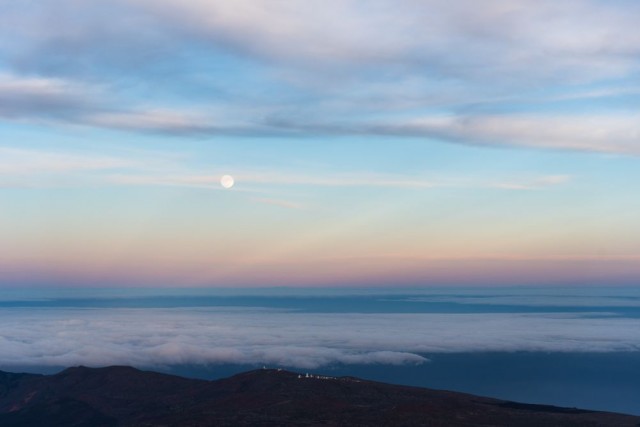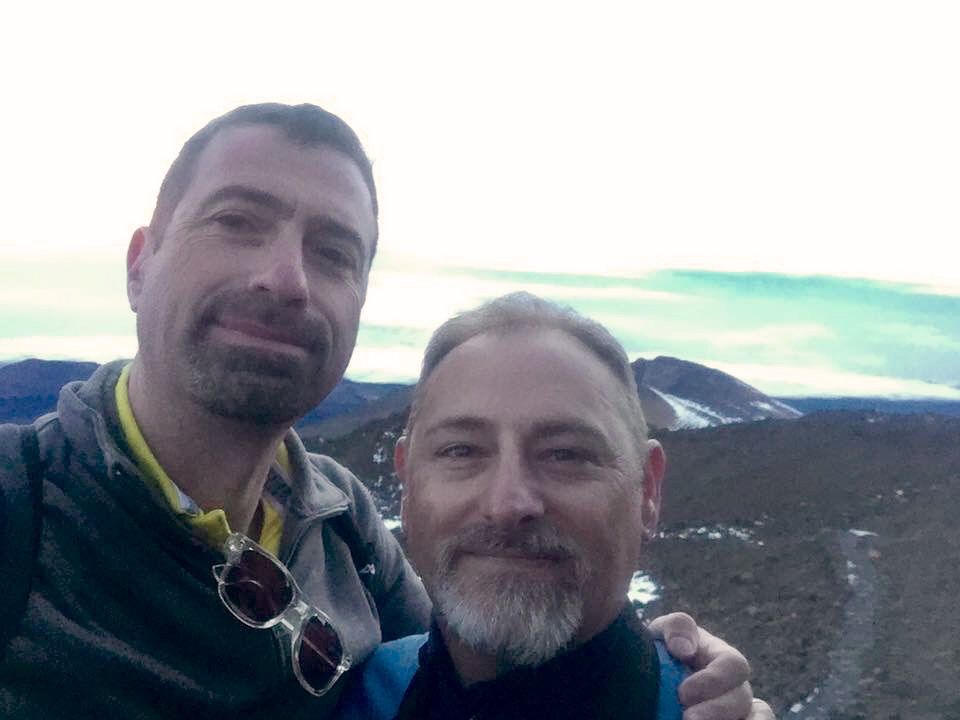It's often a bit cliché to say that a certain island is a 'continent in miniature', but in the case of Tenerife, which I re-visited recently with my husband, it would actually be more correct to say that it's a 'universe in miniature'. And whilst it may not be as popular as Gran Canaria as a gay destination – someone said to me that Tenerife is the domain of the 'reserved gay man' - the island's diversity comes in many forms and shapes.
Tenerife's year-round sunshine has lured tourists for many decades. And often the island has been associated with the cheap, boozy package holiday set, the high-rise hotels and fast food joints. However, the reality is that when I found myself in so many stunningly solitary and peaceful places, along isolated beaches witnessing the roar of the ocean waves, in vast pine forests that stretch endlessly along the mountains hearing the wind brushing the trees, on top of volcanic peaks contemplating the top of the clouds in stunning silence, then I really feel that this beautiful land is truly magnificent and unique.
And if you want to find out why Tenerife is so special, you really need to come to the stunning north coast of the island. Whilst the southern coast is flatter, Tenerife's northern coast, dominated by the enormous mass of the volcanic Mount Teide and its ancient lava flows is a lot steeper and literally plunges into the sea with houses and villages often perched on steep cliffs above the deep blue, tumultuous Atlantic Ocean.
I am probably stating the obvious here, but to properly explore the island you will need a car. You can of course use public transport (there is a good bus network) or join an organised trip to the mountains, but having access to a car means that you gain an independence and you will not be at the mercy of others' timetables. Roads are generally very good and car hire is pretty competitive as there are many local and international rental companies operating here.
Puerto de la Cruz
During our trip we first based ourselves in the biggest city on the northern coast, Puerto de la Cruz. Apart from being a lovely town full of Canarian charm, it's also the perfect base to explore the northern coast and to ascend the volcano. The city centre is very pretty and the seafront promenade lovely for an evening walk. One of the key sights in Puerto is the incredible leisure complex of Lago Martianez. As mentioned before, the northern coast is mostly rocky with just a handful of beaches. The ocean can be choppy and the currents dangerous, so swimming is not recommended in most places. However, there are innumerable rock pools where you may swim in safety. Here in Puerto they went one step further: started in the early 1970s and inspired by the iconic local architect César Manrique, they built a huge complex of saltwater pools, some really are enormous, and surrounded them by lush tropical gardens, cafés, restaurants, all sorts of leisure facilities and beautiful fountains. Being a public space, it is open to everyone and a full day access is only €5.50. You can grab a free sun lounger and spend a day in this beautiful paradise. And if you want WiFi access to post your poolside selfies and access your Spotify, you only pay €1 for the whole day. We were told that there is an unofficial 'gay spot' to the left of the Lago, but we could not see anyone (i.e. our gaydar did not sound) there when we visited. Still, it's a highly recommended way to spend a day in the sun!
The other unmissable sight in Puerto is its fine Botanic Garden. This beautiful green space has a very old history, having been set up by Carlos III in 1788. The King's motives might have been personal, as he wanted to create a place to 'acclimatise' exotic plants to adorn his private palace in Madrid, but the gardens became quickly a place to study new and foreign plants coming from tropical environments all around the world, but especially Latin America. Allow plenty of time to wander in this shady paradise and to marvel at the magnificent trees, some dating back from the time of the garden's original establishment.
La Orotava & La Laguna
This small centre is located just uphill of Puerto de La Cruz, though it's the administrative capital of this part of Tenerife. La Orotava is one of the island's most aristocratic towns and for many years it has been home to the well heeled: unsurprisingly, the streets of the old town are lined with Renaissance mansions of particular beauty, together with beautiful churches and convents. You will also find many nice shops and restaurants to choose from. One of the best preserved buildings is the Casa de Los Balcones with the ornate eponymous balconies and some beautiful inner courtyards with their views over the valley. Another great stop is the Iglesia de la Conception, with its very elegant tower and interior. But most of all we suggest to allow some time to lose yourself in this lovely little town and look out for the many stunning views of the coastline below. We stopped for a lovely 'menu del dia' al fresco lunch at La Duquesa Restaurant in the gorgeous main square of La Orotava for a very reasonably €8 including a glass of wine.
We also visited San Cristobal de La Laguna, a lovely town that at the time of the Spanish conquest of the islands in the early 1500s was the capital of the whole of the Canaries, so it has a particularly refined and upmarket grid-like structure. Such architecture and structure is also the reason why La Laguna is a UNESCO World Heritage site: many Latin American cities, such as Havana, St Juan de Puerto Rico and Lima have been modelled on the former Canarian capital.
The Northern Coast
The coast to the east of Puerto de La Cruz is often skirted by tourists who pass by using the motorway that runs inland from the airport and Santa Cruz (still allowing some amazing views). However, the lower road closer to the coast goes though some beautiful villages. and also a very popular gay beach (see the section below). One of these idyllic hamlets, sitting on a volcanic ledge and perched 200 metres above the ocean is El Sauzal. Here you may stop at one of the panoramic restaurants for a meal or sunset drink – and explore the Lavadero Park: local ladies once washed their clothes in a large pool here. Now the space has been transformed into a sub-tropical garden with stunning views. The coastal road ends near Bajamar, a stunning village with some impressive rock pools – if you fancy a swim in the chilly water. We timely arrived at midday to find that there are some cute cafes and restaurants here, if you want to stop for a bite to eat: find a spot on the terrace and enjoy the sight of the Ocean while you savour your seafood tapas. If you then continue to the modern lighthouse at Punta del Hidalgo you will get a glimpse of the inaccessible northern (and geologically oldest) tip of Tenerife - called Anaga. Here the black volcanic cliffs plunge straight into the ocean and you will feel like you've arrived at the very end of a prehistoric-like Earth.
Icod, Garachico and the West
To the west of Puerto de La Cruz are more stunning rocky coves and plunging cliffs. My first stop here was the pretty village of Icod de los Vinos. Here the main attraction is an enormous Dragon tree – you will find these prehistoric-like trees everywhere in Tenerife, but this particular one is the oldest, possibly 2,000 years old! It's worth paying the €5 entry fee to the gardens where the tree is located: if being in the shade of a tree that may have stood there since the times of Jesus Christ isn't quite enough for you, all around the area there are some rather spooky caves which were used as burial grounds and hold some of the few testimonies left of the Guanches, the indigenous Berber inhabitants of the Canary Islands, who were progressively absorbed by the Spaniards after the conquest in the late 1400s.
Our next stop on the road was the gorgeous town of Garachico, with its stunning historical centre. I think that this part of the coast is at its best in the afternoon light: a great place for a sunset drink is El Burgado, near Buenavista del Norte – a modern restaurant & bar with a terrace offering stunning views over the ocean. From here you see some imposing rocky outposts and you'd think it's pretty much the end of the road: but no, the TF445 wiggles further and climbs up onto the cliffs with hairpin bends and tunnels dug into the bare lava rock before dropping sharply where you finally arrive at the isolated lighthouse of Punta de Teno. This remote peninsula, jutting into the ocean is amazingly beautiful and the sound of the waves crashing on the rocks is all that you will hear. A super-romantic spot at sunset.
The Teide
The whole of Tenerife is punctuated by craters and lava flows to remind us of the fact that this island is effectively a giant volcano in a dormant state (don't worry – no signs of it erupting again, at least in the short term! The last eruption was over a century ago). However, the often snow-capped peak of the Teide, over 3,700 metres high, towers over the whole of Tenerife and is in fact the highest point in Spain's territory. The Teide National Park extends all around the peak: the lower parts of the park are characterised by extensive pine forests, often growing on lava flows – you can guess from the vegetation which lava flows are older and which ones are just now started to be colonised by nature. The higher parts of the park are famous for solitary and captivating landscapes that will make you feel you've suddenly landed on Mars. And it's actually not coincidental that so many sci-fi movies have been filmed here, such as Star Wars. Also the Martian probes have been tested on this terrain, as it's so similar to the Red Planet's. There are many walking routes that are properly signposted, so it's a great place to roam freely. But bring some water and food as there are hardly any shops here in the National Park - and if you are driving remember to fill up with petrol as there are no service stations in the area. You definitely don't want to run out of petrol here!
Whether you decide to contemplate the absolute silence and thin mountain air or rather hike on one or more of the many signposted walking routes available, we absolutely recommend that you get the amazing cable car (Teleférico) that climbs up to just about the top of the Teide (about 100 metres short – to get to the top you need a special permit). Do make sure you book your ride online to avoid disappointment - we choose to go up the top at sunset on a special and more expensive excursion ticket – and seeing the sunset from up there was simply amazing. If fact, we were lucky enough to also see the full moon rise shortly afterwards! However, doesn't really matter when you go, the view from up there is without compare, especially if the sky is clear. It really feels like you're on top of the world – and you're certainly on top of Spain! You can also see the top of other islands – Gran Canaria, La Gomera, El Hierro and La Palma. Do bring warm clothes up there, as it gets really cold and windy at that altitude, even in the summer. Also you need to be aware of altitude sickness: at 3,600 you'll feel out of breath and dizzy pretty quickly climbing those volcanic rocks!
Now, whilst the majority of visitors trek up to the mountains and then down at sunset, there is actually a way of lodging here on the Teide, just a short distance from the cable car base station. The Parador Cañadas del Teide sits on a plateau at over 2,200 metres high and it's the only hotel up there. If you want to witness the now rare spectacle of the starry sky, unaltered by city lights or the majestic dawn of the new day on the top of the peaks, then you may want to sleep there for a night, or two.
Santa Cruz de Tenerife
The largest city on the island is also a very bustling and lively place. In fact, in 2012 Santa Cruz was named as one of the five best places to live in the world by the British newspaper The Guardian. One thing to see here is the amazing Auditorio de Tenerife, which sits right next to the seafront and is a stunning creation of famous Spanish architect Santiago Calatrava. However we were actually a bit sorry to see that in many places this building is already in need of some repairs, despite only being 13 years old.
If you visit around Carnival time (February/March) then you may not be aware that Santa Cruz is home to the second biggest Carnival after Rio de Janeiro - hence why the cities are twinned. Every year the Carnival has a theme - in 2017 it's 'Caribbean' and so all the parties and events follow that theme. Unfortunately we weren't there for the festivities, but we were told that the Carnival street parties are legendary! Must check them out next time...
LGBT Life on Tenerife
Tenerife is not even remotely comparable to Gran Canaria when it comes to gay nightlife. It's not really the sort of place you would come to hit the bars and the clubs, though there are a handful here and there. It's a place where you come for the amazing nature and a very relaxed and doubtlessly gay-friendly - but pretty subdued environment. In fact, we'd say it's the best place to come and recover after a few days spent in that bustling gay mecca that is Gran Canaria, a 30-minute flight away.
When we visited Tenerife a few years ago, most of the gay scene was located in the southern tourist hotspot of Playa de Las Americas – and there were quite a few bars and even a gay resort, Playaflor. Sadly, there is not much left of that thriving scene there. When we went this year I found that most of the bars have closed down, perhaps because the main area where they were based, the Salytien Mall, is now semi-derelict and pretty much abandoned. A very sorry sight indeed: a couple of bars tried relocating elsewhere but unsuccessfully. Playaflor is still open, but it's shifted away from exclusively for the LGBT market so it's basically just another resort.
That may be about to change: the municipality of Arona/Playa de Las Americas has embarked on a new LGBT event, the ARN Culture Pride, which will take place between 5 - 10 June 2017 and will include music, debates, films and illustrious hosts engaged in LGBT rights. More information can be found here.
There are a couple of bars in Puerto de La Cruz, literally adjacent one another and a sauna. There are a few gay beaches around the island, mostly in the south – as I mentioned earlier the northern coast is mostly rocky.
Gay Beaches
On the northern coast the main gay (and clothing optional) beach is the black volcanic sand Playa de Los Patos, located north of Puerto de La Cruz, between the Bollullo and Ancon beaches. It's not so easy to get to unless you have a car and you're prepared for a 20 minute walk.
The southern coast has more in the way of gay beaches. One of them is Playa de la Tejita, a long stretch of sand along the TF643 just past the Reina Sofia airport and dominated by the Montaña Roja.
Around the Playa de Las Americas and Los Cristianos area, worth mentioning Playa Los Callados, which is also quite popular at night.

